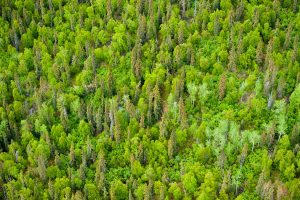“A key response to achieving Net Zero emissions – both within the UK and globally – is to increase the area of woodland. Trees and hedgerows can offer a fantastic opportunity to take carbon out of the atmosphere, whilst providing many other benefits.”
.
The government wants a complete overhaul of UK farming:
Radical changes to UK farming – Vision Group for Sidmouth
One of the reasons is to slow down carbon emissions – because, to quote an Aberystwyth University study, “agricultural/forestry land is a substantial emitter of greenhouse gases, but conversely has a huge potential to be utilised as a mitigating sector through the role of trees/vegetation and soils as active carbon sinks.”
With more here:
Agriculture and climate change
In the most recent figures from the Department for Environment Food and Rural Affairs (DEFRA), the UK ranked the 12th highest country for our CO2 emissions per $ of agricultural production. Agricultural and land-based emissions which are contributing to this can come from many sources including;
- Livestock – through direct emissions, feed production and processing
- Manure and slurry – through their storage and spreading procedures
- Management of grasslands and crops – through fertilisers and other chemical applications which can influence GHG productions directly or indirectly
- Soil management – through the processing of fertilisers, the drainage of peat and compaction and physical factors
- Farm infrastructure and transport – through fuel use, heating, electricity, machinery production and food processing.
However, natural and agricultural land-based systems also offer opportunities for some of the most substantive approaches through which we can increase our sequestration or mitigation of global climate change. This is particularly possible through maintenance or creation of carbon sinks such as soil. Key carbon sinks to be considered in agriculture include;
- Vegetation – including riparian strips, mixed species grasslands, protected scrubland and cover crops amongst others
- Forestry – agroforestry practices and hedgerow plantations
- Soils – through appropriate management of soil health, reduced or no-till farming and many others
Research suggests that the warming environment, related to climate change, will have a mixture of beneficial and detrimental effects on farmers…
Carbon and Climate Change – An Overview | Business Wales
 Forestry can do a lot – and the latest campaign to plant more trees should help:
Forestry can do a lot – and the latest campaign to plant more trees should help:
one child – one tree – Vision Group for Sidmouth
Another study points to the clear benefits:
The role of woodland and agroforestry to meet Net Zero
Land is a critical natural resource, and how it’s used and managed is vital to the UK’s ability to deliver emissions reductions and improve resilience to the effects of climate change. A key response to achieving Net Zero emissions – both within the UK and globally – is to increase the area of woodland. Trees and hedgerows can offer a fantastic opportunity to take carbon out of the atmosphere, whilst providing many other benefits to society.
The role of woodland and agroforestry to meet Net Zero
However, simply planting a load of tiny samplings is not the point:
Growing not planting trees key to unlock climate change benefits
The Royal Forestry Society fears planting millions of trees risks being a short-term indulgence if we don’t then commit to long term sustainable management. And it says this must start with recognising timber as a carbon store.
As it publishes its Forestry and Climate Change policy, RFS Chief Executive Simon Lloyd says: “Climate change is now a national priority and should rightly be at the core of governments’ forestry policies. Such a policy focus will drive real change while delivering multiple environmental benefits of trees, woods and forests.” The report can be downloaded here:
THE ROYAL FORESTRY SOCIETY – FORESTRY AND CLIMATE CHANGE
Growing not planting trees key to unlock climate change benefits
We are talking ‘agroforestry’, a developing area not only looking to creating carbon sinks, but also with promising implications for biodiversity.
Here’s a presentation from a Groundswell Conference, with a farmer talking about how he converted to agroforestry and then an ecologist looking at initial research on the implications for biodiversity:
.
Why should farmers consider agroforestry? Whether you are an arable or livestock farmer, agroforestry – integrating trees into your farming system – offers multiple benefits. It can boost productivity, increase wildlife, improve soil health and animal welfare, manage water flow and contribute to climate change mitigation. Agroforestry can deliver while avoiding potential trade-offs between food production and public goods that occur in many modern farming systems. This year for the first time, the Woodland Trust is here at Groundswell. We promote the benefits of agroforestry and help farmers and landowners plant trees – and we want to help you too.